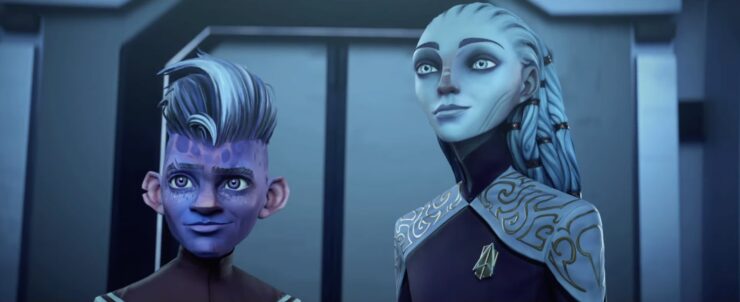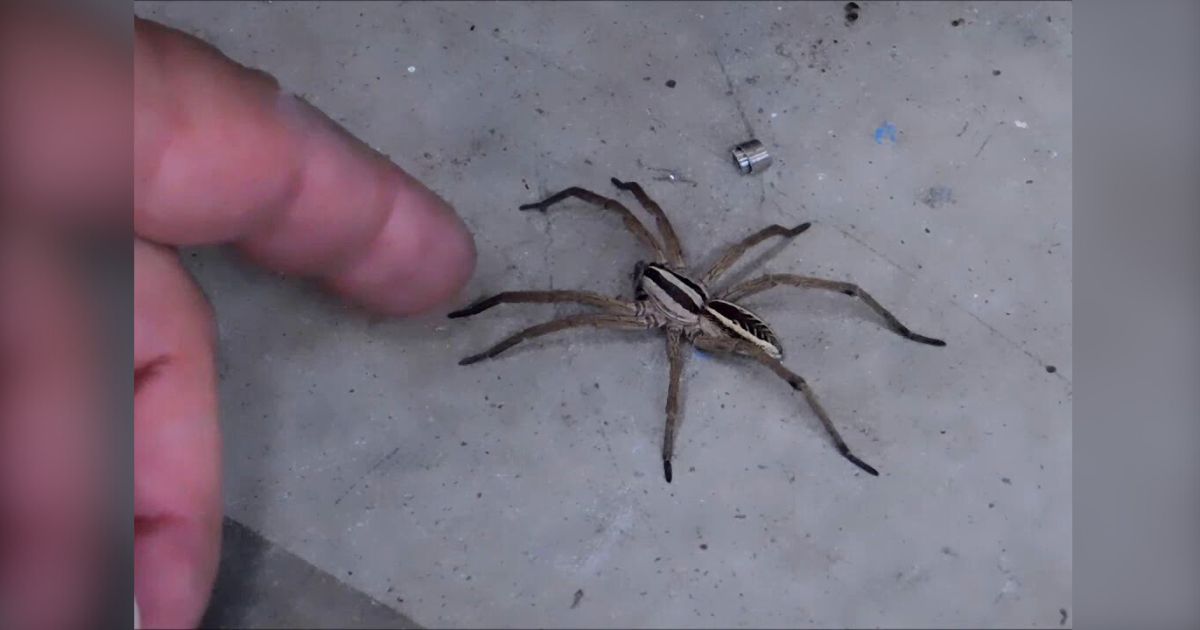
reactormag.com
Analyzing Dreams in Real-Time: Stephen King’s Pet Sematary (Part 4)
Blog
Reading the Weird
Analyzing Dreams in Real-Time: Stephen King’s Pet Sematary (Part 4)
Victor Pascow, or whatever speaks through him, is on a mission…
By Ruthanna Emrys, Anne M. Pillsworth
|
Published on June 20, 2024
Comment
0
Share New
Share
Welcome back to Reading the Weird, in which we get girl cooties all over weird fiction, cosmic horror, and Lovecraftiana—from its historical roots through its most recent branches. This week, we continue Stephen King’s Pet Sematary with Chapters 16-18. The novel was first published in 1983. Spoilers ahead!
Summary
“The barrier was not made to be broken.”
Louis Creed is startled awake in the small hours by a loud crash: did Gage’s crib collapse? Moonlight floods the bedroom; Victor Pascow stands in the doorway. Blood stripes his face, and the broken collarbone juts, just as he’d looked when he died on the infirmary floor. “Come on, Doctor,” Pascow says. “We got places to go.”
Louis realizes with relief that he must be dreaming, because only in a dream could Pascow be anywhere but the morgue. He rises and follows the boy through the house to the kitchen door. Pascow passes through the solid wood like any respectable ghost. So realistic is the dream, however, that Louis must fumble with lock and knob. Outside Pascow waits at the head of the hillside path, the moon silvering his eyes. Horror crawls through Louis’s belly, but those eyes are hypnotic, rendering him as helpless to resist Pascow as he was earlier helpless to stave off his death. When day comes, this nightmare will seem ridiculous. For now, Louis wishes he couldn’t so vividly feel the mud under his bare feet.
They are, of course, heading to the Pet Sematary. On arrival, Pascow stops by Smucky the Cat’s grave and grins. He points toward the deadfall dividing the graveyard clearing from whatever lies deeper in the woods. Instead of fallen branches, it’s now composed of bones both animal and human: writhing, clicking, creeping. As Pascow steps nearer, Louis knows he must scream himself awake. He can do no more than whistle feebly. He falls to his knees.
Pascow looks down at him with “a dreadful kind of patience.” He says, “The door must not be opened.” No matter what he feels, Louis must not go beyond the deadfall barrier. There’s more power here than Louis can comprehend, and it is “old and always restless.” “I come as a friend,” Pascow continues, only Louis senses “friend” isn’t the right word. It’s as if Pascow is speaking a foreign language that Louis’s mind translates through dream-magic. “Your destruction and the destruction of all you love is very near.”
Louis flinches back from Pascow’s hand, knocking over a grave marker. “Doctor, remember,” Pascow says, and the world whirls away from Louis. But he can still hear “the click of moving bones in the moonlit crypt of the night.”
The bone-rattle turns to a metallic clatter as Louis regains consciousness. He’s in his own bed. Sunlight has replaced the moonglow, bringing along “the unmistakable texture of the real world.” In the hall outside his bedroom, Ellie is rolling toy cars for Gage to chase. Louis’s watch reads nearly eight. Rachel’s let him oversleep, but now she calls for Ellie to wake her father up. Ellie obeys, then runs downstairs to meet the school bus, Gage in pursuit. Louis swings his legs out of bed, and reality loses its comfort. His feet are filthy with mud and pine needles. His sheets, too, and there’s a fresh scratch on his arm where a “dream” branch poked it.
He’s going to scream. Then he’ll go crazy and won’t have to worry anymore. No. Instead he fights to regain control. First order of business: Strip the dirty sheets off the bed and chuck them into the laundry for the part-time housekeeper. Second, shower, albeit laughing like a loon. Third, go downstairs to a normal breakfast with Rachel and Gage. Getting rid of inexplicable evidence is the way to deal with the irrational. En route to work, though, he has to pull off the road to wait out an attack of the shakes. He’s not afraid of the supernatural, he tells himself. Just that he’s losing his mind.
At the infirmary, PA Masterton and night doctor Surrendra Hardu are going over patient records. Their banter steadies Louis, as do routine visits from drug reps. Louis learns from Pascow’s university records that he came from New Jersey and had no Ludlow connections. Checking with the morgue, he has a sick moment when the clerk says Pascow’s corpse is gone. But it’s only to a mortuary and from there onto a plane to his parents. Returning home himself, Louis hits on an explanation for his nocturnal trip to the Sematary. He must have had an isolated incident of sleepwalking, triggered by the stress of Pascow’s death. Hence the realness of his dream and the dirt he brought back. Never mind Pascow’s dying prophecies.
After dinner that evening, he walks to the Pet Sematary. Smucky’s grave marker has been knocked over, as he dreamed. The deadfall is dead wood again, not bones. Louis walks its length and sees that the undergrowth on either end is too thorny and laced with poison ivy to provide a way around the barrier. He has an argument with himself about whether he’s really thinking about climbing the deadfall. He agrees with himself it would be a stupid idea, yet he begins to climb. Halfway up, the pile shifts ominously, and Louis clambers back to safety. He’s glimpsed over the deadfall’s crest a path leading deeper into the woods. But that’s no business of his, is it?
It takes him longer than usual to fall asleep that night, but Pascow doesn’t make another spectral appearance. A rainy morning finds Louis’s bedsheets immaculate, his feet clean. In the shower this time, he catches himself whistling.
This Week’s Metrics
The Degenerate Dutch: Pascow’s face is blood-striped “like Indian warpaint.” Coincidence? Meanwhile, the medical staff rag colleague Surrendra Hardu over his Hinduism, which he puts up with like a good minority character.
Libronomicon: Hand’s Human Physiology says it takes the average human seven minutes to go to sleep. This seems doubtful, although perhaps No-Insomnia Georg is an outlier and shouldn’t have been counted.
Weirdbuilding: Louis compares this violation of his reality to a flying saucer (SciFi), a rain of frogs (Fortean), and cold hands reaching from under the bed (urban legend horror).
Madness Takes Its Toll: Louis’s “coherent mind” slips into “yammering” as he confronts Pascow. But it’s the telltale pine needles on his feet in the morning that convinces him he’s going crazy.
Anne’s Commentary
Victor Pascow, or whatever speaks through him, is on a mission. It wasn’t enough to deliver dire prophecies from the reception room carpet. Now he—it?—opens Chapter 16 with an actual bang, throwing back Louis’s bedroom door so violently that Louis bolts upright from dreamless sleep. The question is: Does he bolt from dreamless sleep into nightmare sleep or from sleep into true wakefulness?
Louis assumes he’s still asleep, because in the waking world the dead don’t walk: “It is physiologically impossible,” he reassures himself. Pascow must be in a morgue drawer, toe-tagged, and definitely not still wearing his red jogging shorts.
If Jud were around, he might tell Louis there’s more to death than is dreamt of in his physiology. For now Louis intellectually screeches to a halt at the moment life ceases. I am seeing Pascow, he reasons. Pascow is dead. Ergo I am dreaming. Or mad, but no need to go there. Normal psychology can account for yesterday’s trauma spawning tonight’s phantasms and even the isolated sleepwalking incident with which Louis will later explain the muck on his sheets and why the dream felt so real on the sensory level. He felt all the varying surfaces en route to the Sematary because he actually did traverse them. He, Louis, was really in the animal graveyard. Victor Pascow was just a dream figment, same as the deadfall turned into animate bones.
It isn’t until driving home the afternoon after his nocturnal jaunt that Louis hits on this somnambulistic solution. Chuting his soiled bedclothes, he compared his relief to what a murderer must feel after burying the body. The murderer doesn’t wipe out his crime. Louis didn’t eradicate his sense of the inexplicable, but he took comfort in supposing that “this is what people do with the inexplicable… with the irrational that refuses to be broken down into the normal causes and effects.” They had “a giggling or a crying fit…[then] simply passed terror intact, like a kidney stone.”
Nevertheless Louis investigates Pascow’s background. Had the student any connection with Ludlow, maybe even with the Sematary? No, Pascow came from New Jersey. In fact, his body was already winging home when Louis revisited the graveyard.
Next comes the sleepwalking hypothesis, which is so compelling that it allows Louis to analyze the deeper roots of his dream. Pascow’s death followed the stress of his argument with Rachel, which followed Ellie’s first struggle with the idea of death, which followed the family’s introduction to the Pet Sematary, and Ellie starting school, and everyone getting used to Ludlow. No wonder his subconscious mind brewed all its agitations into a major-league nightmare. Nothing supernatural to see here, folks.
Except Louis can’t blame dreams or sleepwalking for what Pascow said as he lay dying. Instead Louis performs the rational person’s trick for dealing with the irrational: he refuses to entertain the mystery, at least consciously.
However, Pascow’s moribund pronouncements aren’t about to slink off because they’re not invited to Louis’s mental dance. Something beyond the desire to verify his sleepwalk drives Louis to make a third trip to the Sematary. He sees that Smucky’s marker is knocked over, just as he remembers flattening it. Verification achieved, so why does Louis linger to scout out ways to get beyond the deadfall barrier? His kids are waiting for bedtime stories, Rachel for adult time over tea. Louis yields to the quotidian call, but looks back and wonders at the way the grave markers lie in concentric circles like a “scale-model Stonehenge.” He also thinks that during his aborted deadfall ascent, he glimpsed a continuation of the path.
Into deeper woods, deeper mysteries. “No business of yours, Louis,” he chastises himself, but oh, but oh. I’m again drawn back to Jackson’s Hill House. Her opening is famous for its evocative obscurity: “No live organism can continue for long to exist sanely under conditions of absolute reality; even larks and katydids are supposed, by some, to dream.” What is “absolute reality”? Is it simply the waking world, the condition of being awake as opposed to being asleep and dreaming? Less simply, there could be both sleeping and waking dream worlds, the latter being the kind of compensatory imaginings in which Eleanor Vance specializes and to which even Louis Creeds aren’t immune. Remember his fantasy about ditching wife, kids and cat and running off to Disney World for the simpler life of a single theme park doc.
Even less simply, there could also be multiple real worlds; think Max Gladstone’s “alts.” Beyond all these could lie the “absolute reality” which eats sanity, whether it’s comprised of Azathoth or just—death.
For now, Louis is heading home for bedtime stories and kitchen-tea, and I think I’ll do so, too. What’s beyond the Pet Sematary deadfall is none of our business.
Yet.
Ruthanna’s Commentary
There are a lot of scenes in a lot of horror stories where people desperately try to convince themselves that they’re dreaming. This week’s is one of the best I’ve encountered—both because it manages a surprisingly convincing ambiguity, and because the psychology of Louis’s self-argument is so interesting. What might easily fall into cliché turns into something genuinely scary, and genuinely interesting either way.
Louis worries about the sensory detail of the supposed dream, and about his inability to walk through walls following Pascow. He promises himself that he’ll catch inconsistencies on waking. He psychoanalyzes himself, connecting Pascow’s hypnotic demands with his inability to prevent the boy’s death, and not incidentally lampshading the symbolism of the book itself. All this supernatural stuff is here to give us a good shiver on a summer beach, but also a memento mori that death is out of control for everyone.
It’s at the Sematary that Louis loses confidence that he’s dreaming, and at least briefly becomes convinced that he’s really there. It’s during that period of lucidity—anti-lucidity?—that things get strangest. The deadfall turns into an animate collection of bones. That’s never a good sign. The animate bones are apparently also the door that must not be opened. Or maybe its guardian? Pascow isn’t clear on that count, though he’s otherwise extremely clear in the warning that Louis is obviously going to ignore (in an attempt to prove to himself that he was dreaming and isn’t scared). Personally I’m superstitious—if a dream warns me not to do something, I’m inclined to pay attention. Then again, my own prophetic dreams have tended towards enough lottery numbers to win ten bucks. If I’m lucky, I’ll never have to test my “personally, I would simply not” confidence in my ability to avoid horror plots.
It’s after waking, after panicking at the evidence of his midnight perambulations and hiding the evidence from both wife and self, that Louis catches the actual contradiction in Pascow’s warning. The boy wasn’t local. He wasn’t one of the kids who mows the Sematary path all summer, has never buried a beloved dog or raccoon there. So why should he deliver warnings about the Sematary? Only there were those last words, clearly not his. Something is making use of his body. Maybe many somethings. Things whose bones lie in the deadfall?
Things that “come as a friend,” where “friend” is very much the wrong word. What’s the right word? A herald, perhaps, or the otherworldly equivalent of the folks who film PSAs.
Unfortunately for the Public Service Announcers of the underworld, Louis isn’t the sort to listen to paradigm-breaking warnings. He’s the sort to wash away evidence, both for the sake of his own sanity and for Rachel’s sake. On the one hand, tell your wife about these things. On the other hand, it genuinely would set off her phobia, and that didn’t exactly go well last time. Lady Macbeth has her reasons. Louis may not be normally prone to anxieties, but he’s every inch the Lovecraftian protagonist here, even if more self-aware about his need to bandage over the “rain of frogs”. Or, in his medical metaphor, to pass the “terror intact, like a kidney stone.” Vivid, gross, and accurate.
His goal is clearly to help that passage along by either pulling the experience into the rational world of things that can be investigated—where is Pascow’s body really?—or push it out entirely. It’s the liminal borderline that can’t be accepted. But then, it’s that irreconcilable ambiguity that makes for real and effective horror.
And then Louis has to go check out the Sematary waking. And climb the deadfall, knocking bits loose. Good decision, I’m sure.
Next week, we’ll cover Caitlin Kiernan’s “Excerpts for An Eschatology Quadrille”—you can find it in Ellen Datlow’s Children of Lovecraft.[end-mark]
The post Analyzing Dreams in Real-Time: Stephen King’s <i>Pet Sematary</i> (Part 4) appeared first on Reactor.

















